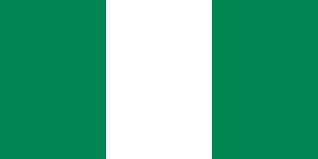Nigeria flag Colors Code hex, png svg
History of the Nigerian Flag
The Nigerian flag was designed in 1959 by a Nigerian student, Michael Taiwo Akinkunmi, as part of a national competition. The design was officially adopted on October 1, 1960, when Nigeria gained independence from Britain.
Colors and Their Meanings
- Green:
- Symbolism: The two green stripes represent Nigeria’s lush vegetation and its vast agricultural resources. The color green is often associated with the country’s natural wealth and fertility of the land, highlighting its potential for agricultural productivity.
- White:
- Symbolism: The white stripe in the center stands for peace and unity. It symbolizes Nigeria’s commitment to fostering harmony and the peaceful coexistence of its diverse ethnic groups.
Design
The flag consists of three vertical bands of equal width. The two outer bands are green, and the central band is white. The simple yet meaningful design reflects the nation’s aspirations for unity, peace, and prosperity.
Significance
The flag embodies the hopes and dreams of a newly independent nation. It serves as a reminder of Nigeria’s natural riches and the importance of peace and unity among its people. The adoption of the flag marked the beginning of a new era, symbolizing Nigeria’s sovereignty and national identity.
Guess the Flags Quiz
Sharing is caring 🤗

National Symbols 👇
- 🏁 National Flags
- 🦁 National Animals
- 🐦 National Birds
- 🌻 National Flowers
- 🌴 National Trees
- 🥭 National Fruits
- 🍹 National Drinks
- 👴 National Founders
- ☘️ National Emblems
- 🍲 National Dishes
- 🏛️ National Monuments
- ✍️ National Poets
- 🕌 National Mausoleums
- 🎺 National Instruments
- 🦸 National Heroes
- 📆 National Days

